2021 Hyundai Sonata N Line Review: First Drive

This mid-size four-door sedan is hardly the quickest car I’ve driven this year. But it is the most deceptive about it. The HUD is helpful for putting the pertinent info front and center, serving as an all-too-common reminder to slow my roll. The Sonata builds speed the way the Earth rotates: quickly, constantly, but (almost completely) without perception.
For 2021, Hyundai has dropped its muscular new 2.5-liter turbo between the Sonata’s trick light-up eyebrows. In doing so, it’s created the low-key sleeper of the year. Do you still pray at the altar of sedans, and want something all respectable-like that can still keep up with hot hatches on your local back roads? Hyundai has the answer.
SEE ALSO: 2021 Hyundai Elantra Review: First DrivePutting it all on the (N) line
“Wait,” I hear you say, “Hyundai already had a more powerful turbo Sonata last generation. What makes this one an N Line?”
I’m glad you asked. Yes, Hyundai did have a stout 245-horsepower 2.0-liter turbo engine in the last Sonata. This year’s larger heart adds another 45 ponies to the corral, totalling 290. More importantly, the torque figure swells to 311 lb-ft, and a new eight-speed dual-clutch transmission takes care of the shifts with a quickness. Most importantly, this new model benefits from a thorough retooling under the skin too, tightening up the Sonata’s responses and making it more athletic than any previous model.
FAST FACTS
| Engine: | 2.5L I4 Turbo |
| Output: | 290 hp, 311 lb-ft |
| Transmission: | 8DCT, FWD |
| US fuel economy (MPG): | 23/33/27 |
| CAN fuel economy (L/100KM): | 10.1/7.2/8.8 |
| Starting Price (USD): | $34,195 (inc. dest.) |
| As-Tested Price (USD): | $34,195 (inc. dest.) |
| Starting Price (CAD): | $39,824 (inc. dest.) |
| As-Tested Price (CAD): | $39,824 (inc. dest.) |
The pre-drive presentation dives into all the numerical geekery. Hyundai’s engineering team, led by Albert Biermann, has increased engine and transmission mount stiffness by 22 and 30 percent, respectively. Spring rates are up 5 percent in the back, with 5 and 18 percent thicker anti-roll bars front and back. These changes in particular give the N Line a more neutral attitude during cornering. The electronically-assisted power steering rack also receives its own tune for N Line duty. Wrapping things all up are a quartet of 245/45R19 Pirelli P Zero all-season tires on some very cool alloy wheels.
Visually, there’s little that sets this apart as the über-Sonata. The front bumper has a similar design but a more pronounced splitter. Out back the four exhaust tips are the biggest tell: you’d barely notice the extended lip spoiler. Which makes it all too easy to swim through the city traffic and aim the Sonata at a twistier part of the map…
Delivering the goods
Even before I clear the land of stop lights, it’s clear this is a very different Sonata than the one I drove last spring. The N Line rides with a tightness the regular model lacks, but staying just to the right side of harshness. There’s a deeper exhaust note too, but that might be from the piped-in sound synthesizer. Nope: I turn it off, and while the burble is fainter, it remains. The steering is still on the light side, but the front-end responds quickly to inputs, and the Pirellis have prodigious levels of grip. The balance through corners is still nose-led, but the Sonata is more adjustable than you’d expect given its size and driven axle.
SEE ALSO: 2020 Hyundai Sonata ReviewThe 2.5-liter is an excellent match for a car this size. It’s responsive, and the torque curve is a veritable plateau, with that headline 311 lb-ft available across over a third of the rev range. The new eight-speed dual-clutch transmission is a similarly strong performer: it will hold ratios well into the upper reaches of the tach, and doesn’t suffer from the low-speed jerkiness of earlier units. In fact, on two or three occasions it actually held onto a gear for too long, as I’d ease off to coast on the highway and the revs would hang up high.
Like any performance car worth its Pirellis in 2020, the N Line has selectable drive modes. They offer a noticeable change to the steering, throttle response, transmission mapping, and exhaust note. I find Sport the best all-rounder, and with the shifter set to manual control (via wheel-mounted paddles) it’s a hoot. Sport+ is probably a little too aggressive for everyday use, though it does open up access to launch control. I attempt it once on an empty, well-sighted stretch, but forget to fully disengage stability control. How embarrassing. Even without it, the Sonata surges forward, happily chirping its tires as it piles on the numbers. That signature dual-clutch flatulence on upshifts draws the attention of the only local around—she of the bovine variety—who gives me a clearly judgemental look. How embarrassing.
As alluded to at the beginning, the Sonata carries speed like Keanu Reeves on a bus. Because the cabin is so comfy, it’s all to easy to find yourself up against the local speed limit. On the highway its default pace is passing.
Something of a bargain
As friendly as Hyundai’s new sport sedan is, it’s the pricing that’s most aggressive. It lists for $34,195 in the US, or $39,824 in Canada (both include destination). That doesn’t even make it the most expensive gas-powered Sonata in the lineup: the top-level Limited (Ultimate in Canada) is a few hundo more. There’s only one real competitor at that price point: the Toyota Camry TRD. The Japanese extrovert is a little cheaper, both in list price and included content.
SEE ALSO: 2020 Toyota Camry TRD ReviewGlancing over the spec sheet, there’s little the N Line loses out on over the top 1.6-liter model. 12.3-inch digital instrument panel and the larger 10.25-inch infotainment screen with navigation? Check. Bose sound system with 12-speakers, wireless charger, and dual-zone climate control? Double check. About the only things I notice missing from the N Line are the ventilated front row and power adjustability for the front passenger’s seat. That seems like a more-than-worthy trade to me.
You get the same interior layout as the other Sonatas too. The all-black color scheme is decidedly more muted, though at least there’s some red contrast stitching. The front seats are the only major change, with good-looking leather-and-suede featuring more side bolstering. The steering wheel also gets the N makeover, with perforated leather at 9 and 3.
The N Line doesn’t skimp on the driver aids either. It includes all the tech you’ll find elsewhere in the Sonata lineup, such as Highway Driving Assist, adaptive cruise control, lane-keep and -follow assists, blind spot avoidance, rear cross-traffic alert, driver attention warning, and high beam assist.
Verdict: 2021 Hyundai Sonata N Line First Drive Review
Hyundai didn’t have to build the Sonata N Line. It could have avoided the performance side of the market entirely, because let’s be honest: these sorts of cars are always destined to sell in smaller amounts.
But the N Line proves that Hyundai’s fledgling performance arm has the bandwidth necessary to take on the big names, and deserves to succeed because of that. It’s the torquiest front-drive car on sale right now, yet the front never feels overwhelmed by all that twist. The Sonata N Line is athletic and fun without tiring you out, and a performance bargain to boot. It’s the ultimate sleeper, with a body that barely hints at the 60-percent increase in power underneath.
The Veloster N is still the halo model, but if you want a bit of that magic baked into something a little more practical, the Sonata is right up your street. Just keep that HUD active—you’ll thank me.
Become an AutoGuide insider. Get the latest from the automotive world first by subscribing to our newsletter here.

Kyle began his automotive obsession before he even started school, courtesy of a remote control Porsche and various LEGO sets. He later studied advertising and graphic design at Humber College, which led him to writing about cars (both real and digital). He is now a proud member of the Automobile Journalists Association of Canada (AJAC), where he was the Journalist of the Year runner-up for 2021.
More by Kyle Patrick



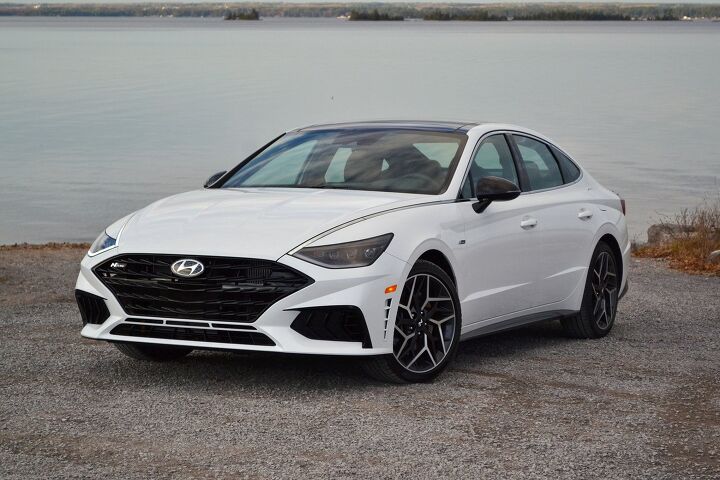
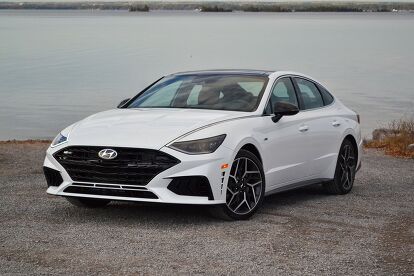













































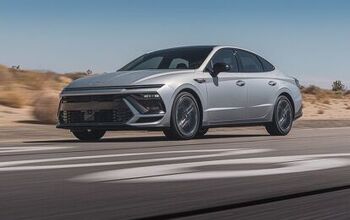


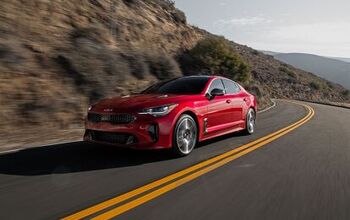




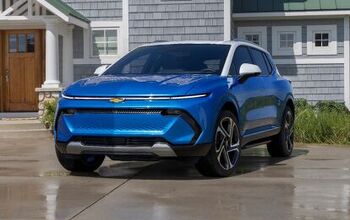
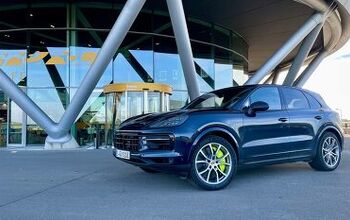

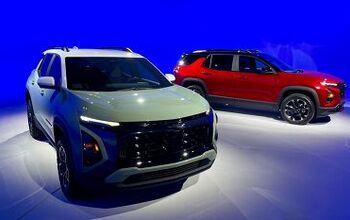
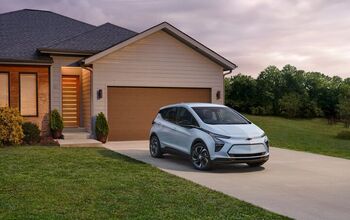

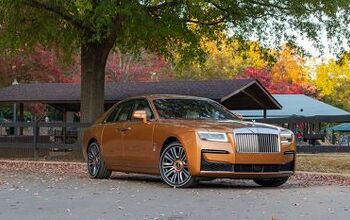
Comments
Join the conversation